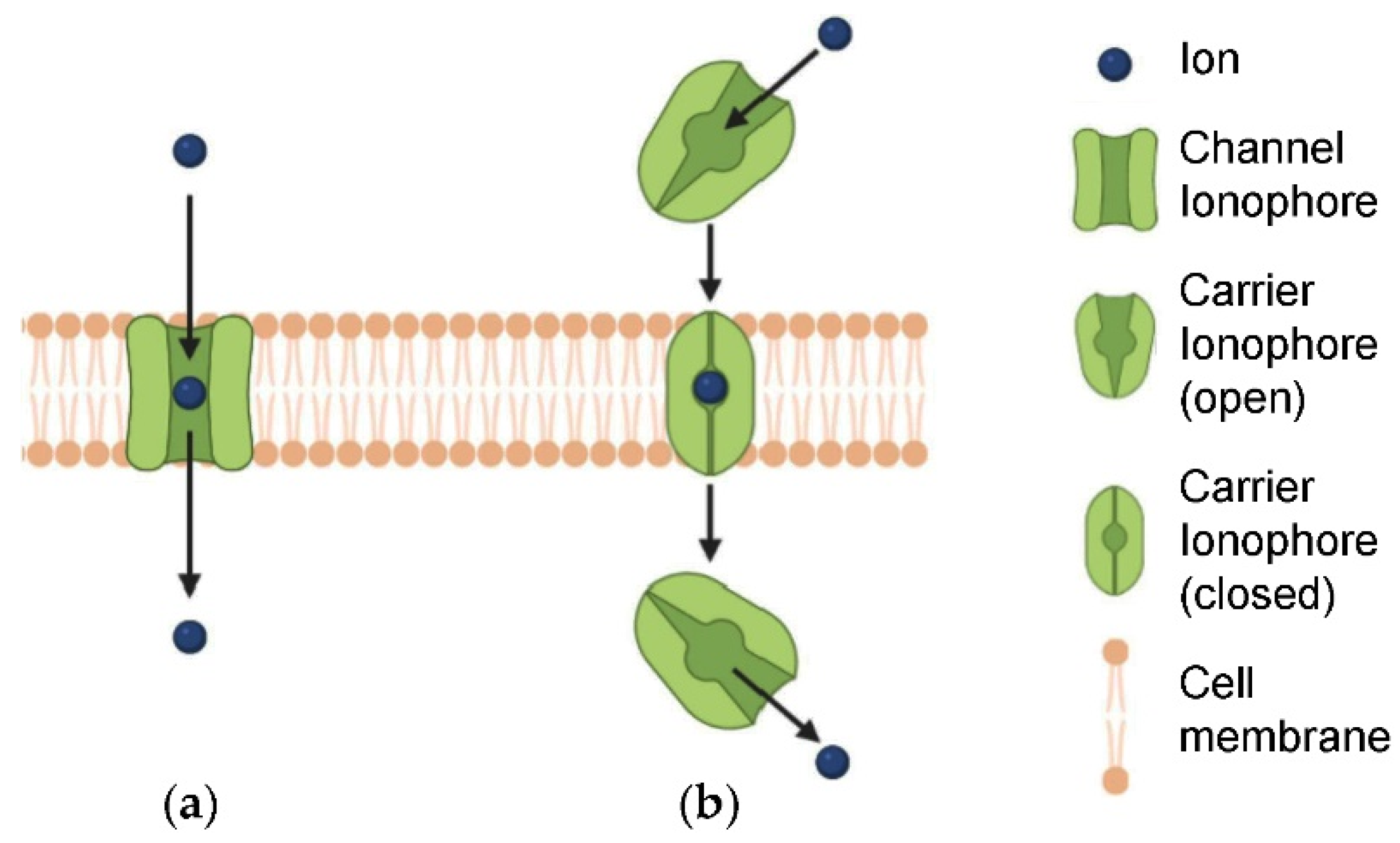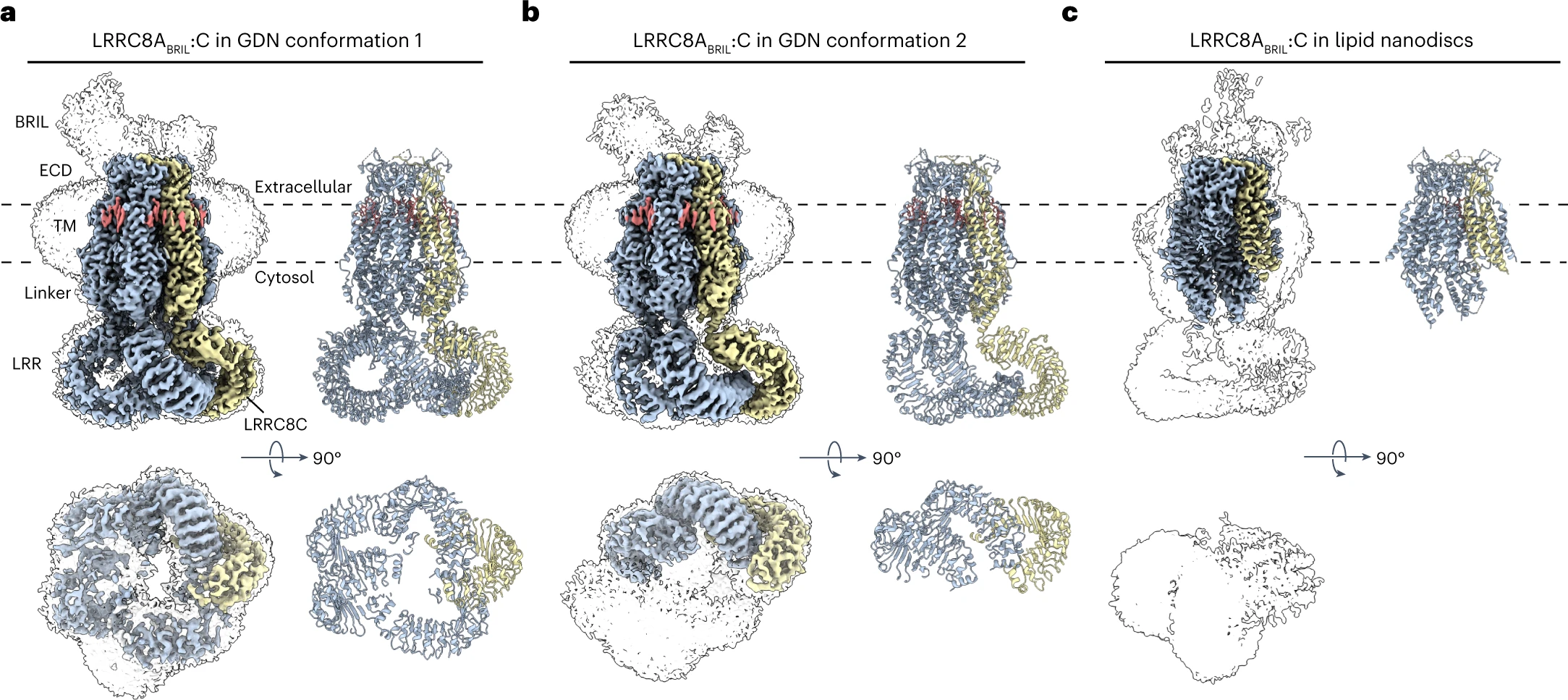Ion Channels Structure Characterization Service
Ion Channels Structure Characterization Service is a high-resolution three-dimensional structural analysis service based on cryo-electron microscopy (Cryo-EM), dedicated to analyzing ion channel proteins and their complexes in different functional states (open state, closed state, inactivated state, etc.). It can be applied in basic research, mechanism studies, structure-based drug design (SBDD), and antibody development.

Picci G. et al. Biomedicines. 2022.
Ion channels are a class of transmembrane protein complexes located on cell membranes or organelle membranes, allowing specific ions (such as Na⁺, K⁺, Ca²⁺, Cl⁻, etc.) to selectively pass through the membrane structure, thereby maintaining critical physiological functions such as changes in membrane potential, signal transmission, osmoregulation, and muscle contraction within the cell. Ion channels are characterized by high selectivity, high conduction rates, and gated regulation. Dysregulation of ion channels is closely associated with various diseases, including epilepsy, arrhythmias, chronic pain, and cancer. Structurally, ion channels typically form multi-subunit complexes and possess complex gating mechanisms (such as voltage-gated, ligand-gated, and mechanically-gated mechanisms) as well as multiple conformational states (open, closed, inactivated). Resolving the three-dimensional structures of ion channels in different functional states is critical for understanding their mechanisms of action and guiding targeted drug development.
Cryo-EM is a technique that enables three-dimensional structure determination of biological macromolecules under near-physiological conditions without the need for crystallization, using rapid freezing and electron beam imaging. In ion channel research, Cryo-EM has been widely applied to mechanistic studies and drug development support for voltage-gated sodium channels (Nav), calcium channels (Cav), potassium channels (Kv), TRP channels, and mechanosensitive channels.
Leveraging an advanced cryo-EM platform, MtoZ Biolabs provides the Ion Channels Structure Characterization Service which resolves the three-dimensional structures of ion channels in different functional states, identifies ion selectivity pockets, gating domains, regulatory ligand-binding sites, and conformational transition pathways. This service supports researchers and pharmaceutical developers in gaining deep insights into ion channel functional mechanisms and guides the design of innovative drugs and mechanism-of-action studies.
Analysis Workflow
The main analysis steps of MtoZ Biolabs' lon Channels Structure Characterization Service using Cryo-EM are as follows:
1. Sample Preparation and Functional Validation
Express and purify ion channel proteins, and verify the integrity and functional activity of the complexes using SEC or electrophysiological methods.
2. Cryo-Grid Preparation and Preliminary Screening
Optimize cryo-grid preparation and assess particle distribution and orientation quality through negative staining or rapid Cryo-EM screening.
3. High-Throughput Cryo-EM Data Collection
Acquire large amounts of high-quality image data under low-dose conditions using the cryo-EM platform.
4. Image Processing and 3D Reconstruction
Perform particle picking, 2D/3D classification, and 3D reconstruction, extract different conformational states, and enhance local resolution.
5. Atomic Modeling and Functional Annotation
Build atomic models of the ion channels based on the density maps, and annotate the selectivity filter, gating structures, and ligand-binding sites.
6. Result Delivery and Functional Interpretation
Provide standardized structural data and complete structural reports to support mechanism studies, drug development, and publication.
Applications
The applications of Ion Channels Structure Characterization Service include:
Gating Mechanism Analysis of Ion Channels
Analyze voltage-gated, ligand-gated, or mechanically-gated mechanisms and their dynamic transitions.
Ion Selectivity and Filtering Mechanism Studies
Reveal how different ion species selectively pass through the filter pore.
Ligand Regulation and Drug Binding Site Analysis
Resolve the binding modes of small molecule modulators, toxins, or antibodies to aid structure-based drug design (SBDD).
Mutation Mechanisms and Disease-Associated Variant Studies
Compare the structures of wild-type and mutant ion channels and analyze the structural and functional impacts of pathogenic mutations.
Capturing Open, Closed, and Inactivated Conformations
Systematically reveal atomic-level conformational changes of ion channels under different activation states, supporting functional mechanism modeling.
FAQ
Q. Can Cryo-EM resolve the binding modes of small molecule modulators or lipid molecules with ion channels?
Yes. Current Cryo-EM techniques, achieving resolutions better than 3.5 Å either globally or locally, can accurately identify small molecule modulators (such as drugs and toxins) and endogenous lipids (such as PIP₂ and cholesterol) bound to ion channels. The use of Focused Refinement strategies can further enhance density details at the ligand-binding regions, providing structural insights for regulatory mechanism analysis and drug design.
Q. If the ion channel exhibits strong dynamics or conformational heterogeneity, can Cryo-EM still resolve its structure?
Yes. Through advanced three-dimensional classification, local heterogeneity analysis, and local refinement, it is possible to effectively identify and separate different conformational states. Even with dynamic flexibility or heterogeneity in the sample, high-resolution structures of specific states can still be obtained.
Case Study
This study used Cryo-EM technology to resolve the three-dimensional structure of the volume-regulated anion channel (VRAC) composed of LRRC8A and LRRC8C subunits. The study found that the LRRC8A:C channel assembles into a stable hexameric complex in a 4:2 ratio. In the closed state, lipid molecules are embedded in the channel pore to block the passage of ions, suggesting that lipids play a key role in the gating process. Further analysis showed that the introduction of the LRRC8C subunit increased the dynamics of the channel structure, promoted the rearrangement of the cytoplasmic side domain and formed a lateral opening, which may facilitate lipid removal and channel activation.

Kern DM. et al. Nat Struct Mol Biol. 2023.
How to order?







